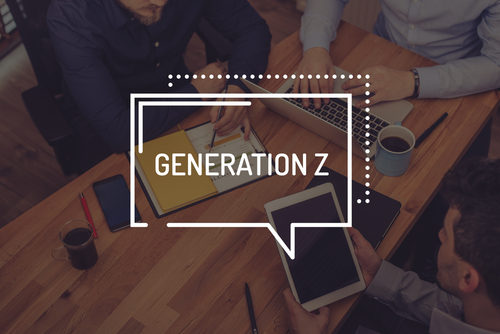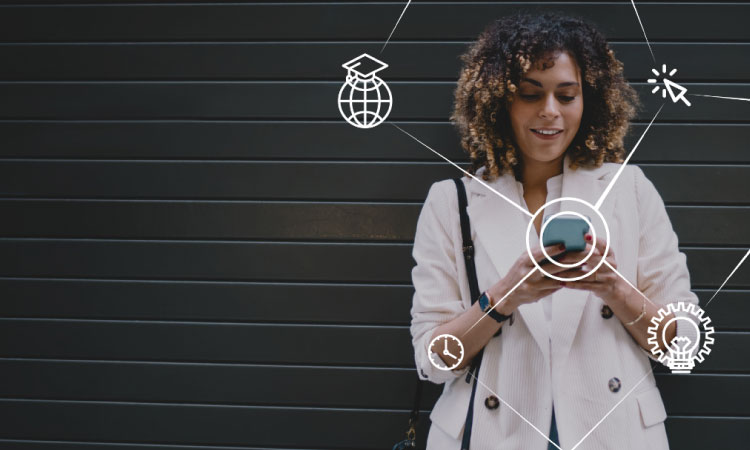Training Gen Z: What Your Youngest Employees Expect From the Workplace

In fact, the worrying has already begun. A recent study showed that managers are not excited to welcome Generation Z, which has already begun to enter the workforce. They’re voicing concerns familiar to anyone who has ever read a think piece about Millennials, or even Gen X; they worry that Gen Z will be entitled, lazy and glued to their phones.
Although the reality is likely brighter than those concerns suggest, Generation Z will come with some challenges, one of which is training.
Who is Generation Z?
Generation Z is made up of the children born between the mid-1990s and the mid-2000s. Although no one can seem to agree on which years bracket Gen Z, its members are roughly between 14 and 24 years old, which means that the oldest Gen Zers are already in the workplace.
Currently, Generation Z makes up about 25 percent of the U.S. population, outnumbering Millennials.
They’ve lived through a time of greater turmoil than older workers, living through Sept. 11, the wars in Iraq and Afghanistan, the Great Recession, and have experienced active shooter drills in their schools. This upheaval, and their lifelong exposure to technology and social media, has shaped them in different ways than previous generations.
For example, they have a complicated relationship with learning. According to TD, Gen Z believes in higher education, but they worry about how much it costs — only 65 percent of Generation Z feels that college is worth the money.
They do, however, love learning. And they expect it at work. And if they don’t get it? They may start looking for another job.
Want to keep Gen Z at work? Train them.
The oldest members of Generation Z are still just a few years out from college, but they’re concerned that their college education may not have adequately prepared them for the workforce.
A recent study from Deloitte shows that they find training at work more valuable than college studies. When asked who taught them the skills they use to complete their daily jobs, Generation Z estimated that on-the-job training and continuous learning in the workplace were responsible for 44 percent of the skills they use daily, as opposed to the 26 percent of skills they learned in college.
The same study showed that if a workplace provides training and continuous learning, it’s likely to earn its employees’ loyalty. Unfortunately, just 42 percent of Gen Z workers surveyed believed they were getting adequate training at work.
This means that if you’re not training your youngest workers or fostering continuous learning, you could see some turnover — but if you’re willing to turn your L&D strategy around right now, all is not lost.
A LinkedIn study found that 40 percent of workers 24 and younger — an entrepreneurial age group that has no problem career-hopping and may have had as many as four full-time jobs already — would talk to their manager about making a career change if they were given “access to access to additional opportunities to learn and grow within the workplace.”
Building training for digital natives
It’s been established that Gen Z loves to learn. But how do they take their learning?
Pretty much as you expect — digitally. Generation Z grew up with a mobile device in its hand and doesn’t remember a time when social media wasn’t a part of its life.
The youngest workers will expect technology to be a part of their training, and not just any technology. As digital natives they will know the difference between good training and bad. Now is the time to start looking into making training fit Generation Z’s experience with technology.
That may mean providing learning that is:
- mobile
- social
- on-demand
Mobile learning – That Gen Z expects mobile learning is a given. More U.S. adults own a smartphone than any other device and the number of adults who own a laptop or desktop has fallen off in recent years. Any employer who wants training to reach Gen Z where they are will have to make digital learning mobile.
Social learning – Gen Z grew up with social media and cooperative gaming. CLO Media recommends that executives post content through social channels and other online platforms to encourage social learning, but an LMS with a social feature, or an integration with a company’s intranet would also help make L&D more social.
On-demand learning – Having grown up with access to the world’s knowledge at their fingertips in the form of Wikipedia and YouTube, the members of Generation Z are likely to have little patience with traditional workforce learning. Rather than wait for employers to deliver information, they’re likely to go looking for what they need when they need it, whether or not their employers provide it. Workplaces that want to make sure their employees are finding the right information, may want to look into just-in-time learning — which provides information to learners at the point of need — and micro-learning, which provides small, tightly-focused lessons to employees, sometimes serving it up just as learners need it.
Welcoming Gen Z to work
Every generation worries about the next one. Remember that study about managers worried about Gen Z workers? A large chunk of those concerned managers are Millennials, who have never had to worry about an incoming generation of newcomers before.
But Generation Z is an asset. We live in a digital world and Generation Z is the first generation that is totally digital.
While older Millennials remember a time when the Internet wasn’t a fact of life and not everyone had a mobile phone, Gen Z can’t remember a time before wi-fi and Wikipedia. Their relationship with technology — and with learning — will change the workforce, but also necessarily change the way companies train them.




